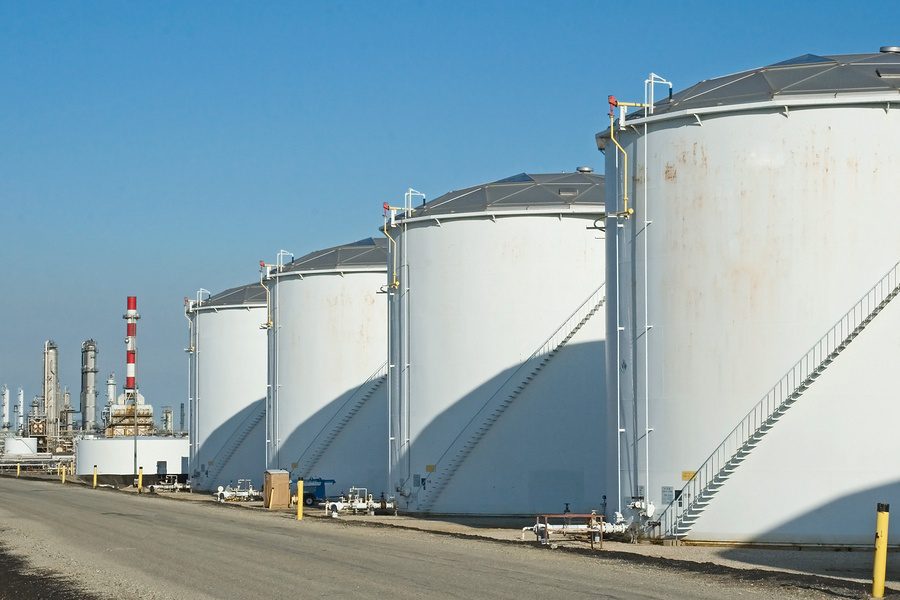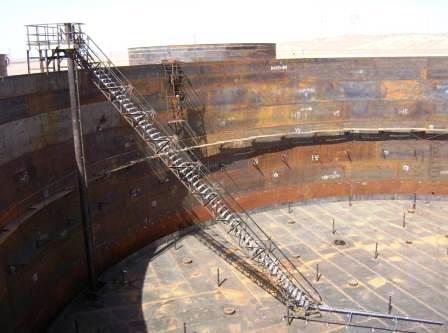Everything You Need to Know About API 650 Welding Inspection Procedures
Wiki Article
Exactly How Welding Evaluation Works: A Comprehensive Overview for Professionals
Welding assessment plays a vital duty in making certain the safety and integrity of welded structures. It entails a methodical technique that consists of both aesthetic inspection and progressed screening approaches. Experts must acquaint themselves with essential criteria and policies regulating the sector. Understanding the usual defects that can occur throughout welding is essential. This overview will certainly discover these components carefully, supplying understandings into the processes that promote high quality and honesty in welding.Understanding the Value of Welding Examination
While lots of might underestimate the relevance of welding examination, it plays a vital role in guaranteeing the honesty and security of welded structures. Efficient welding assessment recognizes potential defects and defects that can compromise architectural toughness and cause devastating failures. The examination process includes different methods, such as visual exams, ultrasonic screening, and radiographic assessments, each adding to the total evaluation of weld top quality.
In enhancement to safeguarding the structural stability, welding assessment guarantees compliance with sector criteria and customer specifications. By ensuring that welds satisfy called for tolerances and characteristics, examinations help maintain the dependability and long life of elements in numerous applications, from building and construction to aerospace. A strenuous evaluation process promotes a society of quality and liability amongst welders and suppliers. Eventually, welding examination is not merely a step-by-step action; it is a crucial practice that underpins the safety and security and efficiency of engineered systems across diverse sectors.
Trick Requirements and Laws in Welding Inspection
The structure of effective welding assessment hinges on adherence to established requirements and laws. Various companies, such as the American Welding Society (AWS) and the American National Criteria Institute (ANSI), stated guidelines that assure quality and safety and security in welding methods. Secret standards, such as AWS D1.1 for architectural welding and ASME Section IX for stress vessels, provide extensive requirements for welding qualifications, procedures, and inspections. Regulatory frameworks, consisting of those from the Occupational Safety and Health Administration (OSHA), required safety techniques and worker securities in welding atmospheres. Compliance with these standards is essential for attaining regular weld top quality and minimizing the danger of failures. Furthermore, global standards like ISO 3834 further enhance international consistency in welding assessment techniques. Professionals must remain educated about these guidelines to guarantee that their assessment methods align with industry expectations and legal demands, thus securing both workers and structural integrity.First Prep Work and Visual Assessment Techniques

Reliable welding evaluation starts with an extensive pre-inspection list that guarantees all required problems are met prior to the actual assessment takes place. Following this prep work, aesthetic issue identification plays a necessary role in assessing weld high quality, allowing inspectors to spot concerns such as cracks or improper blend. Together, these methods form the structure for a successful welding examination procedure.
Pre-Inspection List
Prior to commencing any kind of welding evaluation, an extensive pre-inspection list is essential to guarantee that all essential preparations are finished which aesthetic examination techniques are efficiently employed. Key aspects of this list include verifying the welding procedure requirements (WPS), ensuring all tools is adjusted and in great working problem, and verifying that the assessor possesses the needed accreditations. In addition, it is essential to assess any previous assessment records and to analyze the work setting for security dangers. The assessor must also verify that all relevant documents, such as material certifications and examination records, is conveniently offered. Finishing this checklist assists to develop a strong structure for a successful inspection process, improving the integrity of the outcomes acquired.Visual Issue Recognition
A successful visual defect recognition procedure begins with mindful first prep work and the application of well-known aesthetic examination techniques. Inspectors must assure that the welding location is tidy and well-lit, as adequate exposure is vital for identifying defects. A complete exam of the weld joint's surface area permits the identification of stoppages, such as splits, damages, or porosity. Inspectors often use devices like multiplying glasses or mirrors to improve their sight of hard-to-reach locations. Additionally, they must be familiar with the specific welding standards and guidelines appropriate to the job. By sticking to these techniques, assessors can successfully recognize potential concerns, securing the stability of the weld and conformity with market requirements.Non-Destructive Screening Techniques: An Overview
Non-destructive testing (NDT) techniques play a necessary duty in the welding evaluation procedure by ensuring the integrity and dependability of welded structures without triggering any kind of damages (API 650 Welding Inspection). These methods enable examiners to review the top quality of welds while protecting the elements being taken a look at. Usual NDT techniques include ultrasonic testing, radiographic testing, magnetic bit testing, and dye penetrant testing, each offering unique benefitsUltrasonic screening employs high-frequency acoustic waves to find interior defects, while radiographic screening utilizes X-rays or gamma rays to picture the internal framework of welds. Magnetic bit testing exposes surface area and near-surface flaws by using a magnetic field and iron bits to the weld location. Color penetrant screening highlights surface-breaking problems through the application of a colored color. Together, these NDT approaches give crucial understandings right into weld top quality, making it possible for experts to make enlightened choices pertaining to safety and compliance in welding applications.
Common Problems and Their Effects
Determining typical issues in welded joints is essential for maintaining structural stability and safety and security. Various issues can develop throughout the welding procedure, each bring potential implications for the overall performance of the structure. Porosity, defined by little gas pockets within the weld, can damage the joint and endanger its load-bearing ability. Cracks may develop due to thermal stress and anxiety or improper cooling, bring about possible failure under stress. Insufficient fusion occurs when the weld metal does not fully bond with the base material, leading to weak joints that might not withstand designated lots. Undercutting, where the base metal is eroded, can likewise minimize the efficient cross-section of the weld. Additionally, extreme reinforcement can produce tension concentrations that could result in failure. Recognizing these problems promptly permits restorative steps, making certain the long life and integrity of welded frameworks in vital applications.Tools and Equipment Utilized in Welding Evaluation
Effective welding inspection depends on a selection of specialized devices and devices to assure the quality and stability of bonded joints. Necessary instruments consist of visual evaluation devices, such as magnifying borescopes and glasses, which permit assessors to carefully take a look at welds for surface area flaws. Non-destructive testing (NDT) techniques, such as ultrasonic testing, radiographic testing, and magnetic fragment click here now testing, are essential for recognizing interior imperfections without harming the product.Measurement devices, consisting of calipers and weld evaluates, assist ascertain and assess measurements compliance with specifications. Additionally, firmness testers review the mechanical homes of welded joints. Personal safety equipment (PPE) is also important, safeguarding the safety of inspectors while operating in possibly hazardous atmospheres (API 650 Welding Inspection). Each tool serves a specific function, jointly enhancing the efficiency of welding assessment and contributing to the reliability of completed projects
Often Asked Concerns
What Certifications Are Needed to Become a Welding Assessor?
To end up being a welding inspector, individuals commonly need relevant certifications, such as AWS CWI or CSWIP, together with experience in welding procedures, engineering concepts, and understanding of evaluation methods, safety criteria, and appropriate codes.Exactly How Commonly Should Welding Inspections Be Performed?
Welding assessments must be conducted frequently, preferably at different job phases, reference consisting of pre-weld, during-weld, and post-weld. Frequency might likewise rely on industry requirements, job specifications, and the intricacy of the welds included.Can Welding Defects Be Fixed After Examination?

Yes, welding defects can typically be repaired after inspection. Relying on the seriousness and kind of flaw, suitable techniques such as reworking or extra welding may be used to recover structural integrity and security conformity.
What Industries Require Regular Welding Examinations?

Numerous industries, consisting of construction, manufacturing, aerospace, and auto, call for regular welding examinations - API 650 Welding Inspection. These examinations assure adherence to safety and security standards and top quality control, lessening dangers connected with architectural honesty and operational performance in bonded elements
Exactly how Do I Choose a Welding Examination Solution?
To choose a welding examination solution, one need to take into consideration qualifications, experience, certifications, and industry online reputation. Additionally, evaluating consumer testimonials and ensuring the service satisfies pertinent requirements can assist ensure top quality evaluations and reliable outcomes.
While lots of may ignore the value of welding assessment, it plays a crucial role in ensuring the stability and safety of bonded structures. Secret requirements, such as AWS D1.1 for structural welding and ASME Section IX for stress vessels, give comprehensive requirements for welding credentials, inspections, and treatments. Efficient welding evaluation begins with a complete pre-inspection checklist that guarantees all needed problems are satisfied before the real assessment takes area. Before beginning any kind of welding evaluation, a comprehensive pre-inspection checklist is important to guarantee that all needed prep work are completed and that aesthetic inspection techniques are efficiently used. Non-destructive screening (NDT) approaches play go right here a crucial role in the welding inspection procedure by guaranteeing the integrity and reliability of welded structures without causing any type of damage.
Report this wiki page